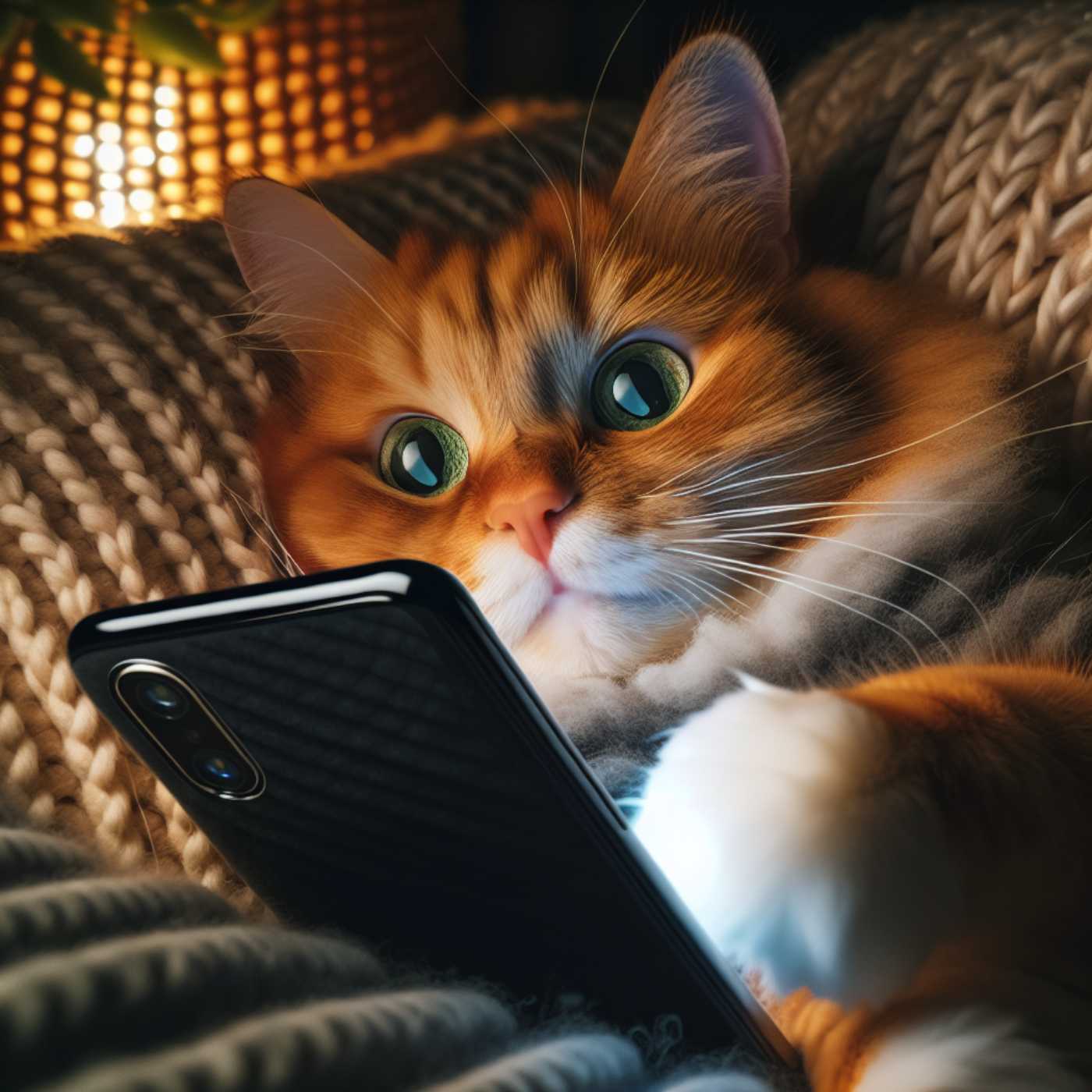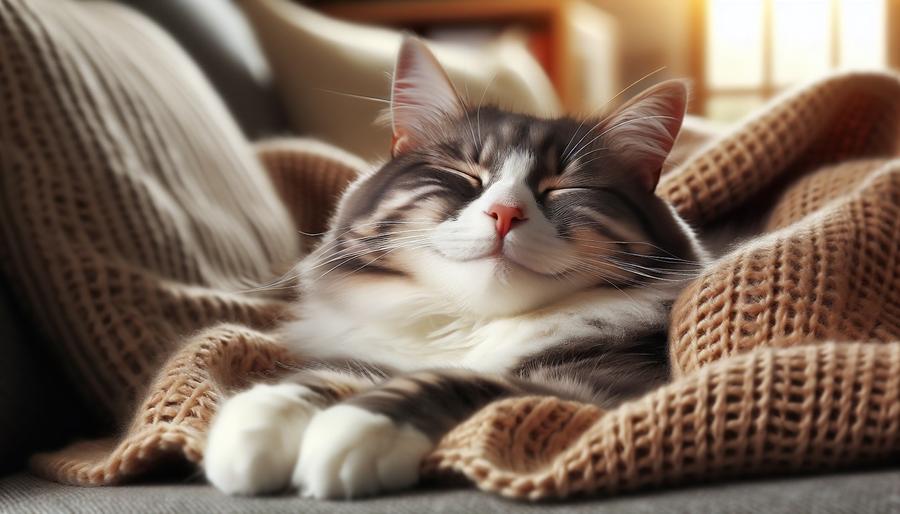Home Cat Grooming 101 is your go-to guide for keeping your feline friend looking and feeling their best. From brushing techniques to nail trimming, this book provides essential tips for a stress-free grooming experience. With expert advice and step-by-step instructions, you'll learn how to maintain a healthy and happy cat right in the comfort of your own home.

Is Your Cat Getting Too Much Screen Time?
RUnderstanding the Impact of Excessive Screen Time on Your Cat
As we increasingly rely on digital devices in our daily lives, it’s not just humans who are getting more screen time.
Our feline friends are also being exposed to screens more frequently, whether it’s through watching bird videos on a tablet or chasing a laser pointer on a TV screen. While this may seem like harmless fun, it’s important to understand the potential impact of excessive screen time on your cat.
Firstly, it’s crucial to note that cats perceive the world differently from humans. Their eyes are designed to detect movement and they have a wider field of vision, which makes them excellent hunters. However, this also means that they may not perceive digital images in the same way we do. For instance, a cat might not be able to distinguish between a bird on a screen and a bird in real life. This could lead to confusion and frustration, especially if the cat tries to interact with the image but is unable to do so.
Excessive screen time can lead to physical health issues in cats. Just like in humans, staring at a screen for prolonged periods can cause eye strain and fatigue. Cats may also adopt unnatural postures while watching screens, which can lead to musculoskeletal problems over time. Furthermore, if a cat spends too much time in front of a screen, it may not get enough physical exercise, which is essential for its overall health and well-being.
In addition to physical health issues, excessive screen time can also affect a cat’s mental health. Cats are naturally curious and active creatures. They need a variety of stimuli to keep their minds sharp and their instincts honed. If a cat spends most of its time watching screens, it may not get enough mental stimulation from other sources, such as playing with toys or exploring its environment. This could lead to boredom, stress, and even behavioral problems.
It’s also worth considering the impact of screen time on the bond between you and your cat. While it’s true that some cats seem to enjoy watching videos or playing games on screens, these activities are essentially passive. They don’t require much interaction between you and your cat, and they certainly don’t replace the benefits of direct interaction, such as petting, playing, or simply spending time together.
In conclusion, while a little screen time can be a fun diversion for your cat, it’s important to ensure that it doesn’t become a substitute for other forms of physical and mental stimulation. As a responsible cat owner, it’s your job to provide a balanced and enriching environment for your feline friend. This means offering a variety of activities and stimuli, including toys, scratching posts, and opportunities for exploration. It also means spending quality time with your cat, engaging in interactive play, and providing plenty of affection. By doing so, you can help ensure that your cat stays healthy, happy, and well-adjusted, regardless of how much screen time it gets.

How to Limit Your Cat’s Screen Time: Practical Tips
As the digital age continues to evolve, it’s not just humans who are becoming increasingly engrossed in screen time. Our feline friends are also being drawn into the world of digital entertainment. While it may seem harmless or even amusing to watch your cat paw at a moving object on a screen, there are potential downsides to excessive screen time for cats. This article will provide practical tips on how to limit your cat’s screen time.
Firstly, it’s important to understand why excessive screen time can be detrimental to your cat’s health. Cats are naturally active creatures, and their bodies are designed for hunting and exploring. Sitting in front of a screen for extended periods can lead to obesity and related health issues, such as diabetes and heart disease. Moreover, the artificial light emitted by screens can disrupt your cat’s natural sleep cycle, leading to stress and behavioral problems.
To limit your cat’s screen time, the first step is to provide alternative forms of entertainment. Cats are instinctively drawn to movement, so toys that mimic the movement of prey, such as feather wands or laser pointers, can be effective distractions. Interactive toys that require your cat to solve a puzzle to get a treat can also keep your cat engaged and mentally stimulated.
Another practical tip is to establish a routine for your cat. Cats are creatures of habit, and they thrive on routine. By setting specific times for meals, play, and rest, you can help your cat develop a healthy daily rhythm that doesn’t revolve around screen time. It’s also beneficial to include some outdoor time in your cat’s routine, if possible. Even a short walk on a leash or supervised time in a secure outdoor enclosure can provide valuable physical exercise and mental stimulation for your cat.
In addition to providing alternative forms of entertainment and establishing a routine, it’s also important to monitor your cat’s screen time. Just as parents use parental controls to limit their children’s screen time, cat owners can use similar strategies. For example, you can set a timer to remind you to turn off the screen after a certain period, or you can use apps that automatically shut off after a set time.
Lastly, it’s crucial to lead by example. If you’re constantly glued to your screen, your cat is likely to follow suit. By limiting your own screen time and engaging in more physical activities, you can encourage your cat to do the same.
While it’s not necessary to completely eliminate screen time for your cat, it’s important to ensure that it doesn’t become a substitute for physical activity and real-world interaction. By providing alternative forms of entertainment, establishing a routine, monitoring screen time, and leading by example, you can help your cat maintain a healthy balance between the digital world and the real world. Remember, a healthy cat is a happy cat, and a happy cat makes for a happy owner.




This Post Has 0 Comments